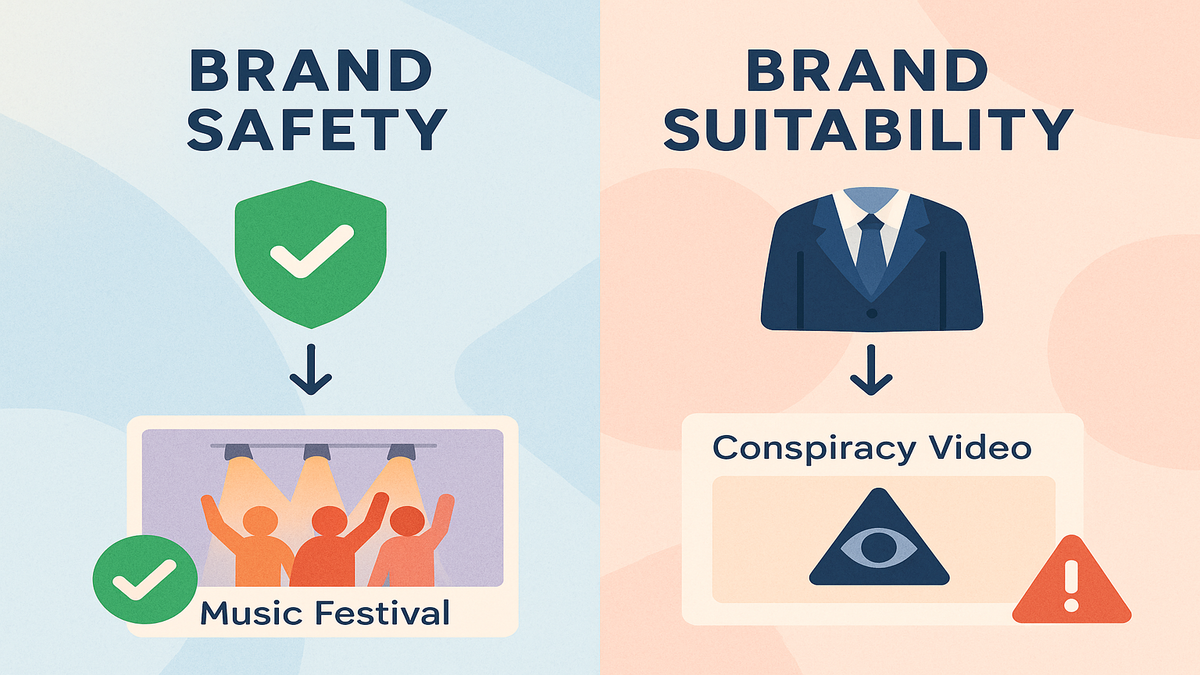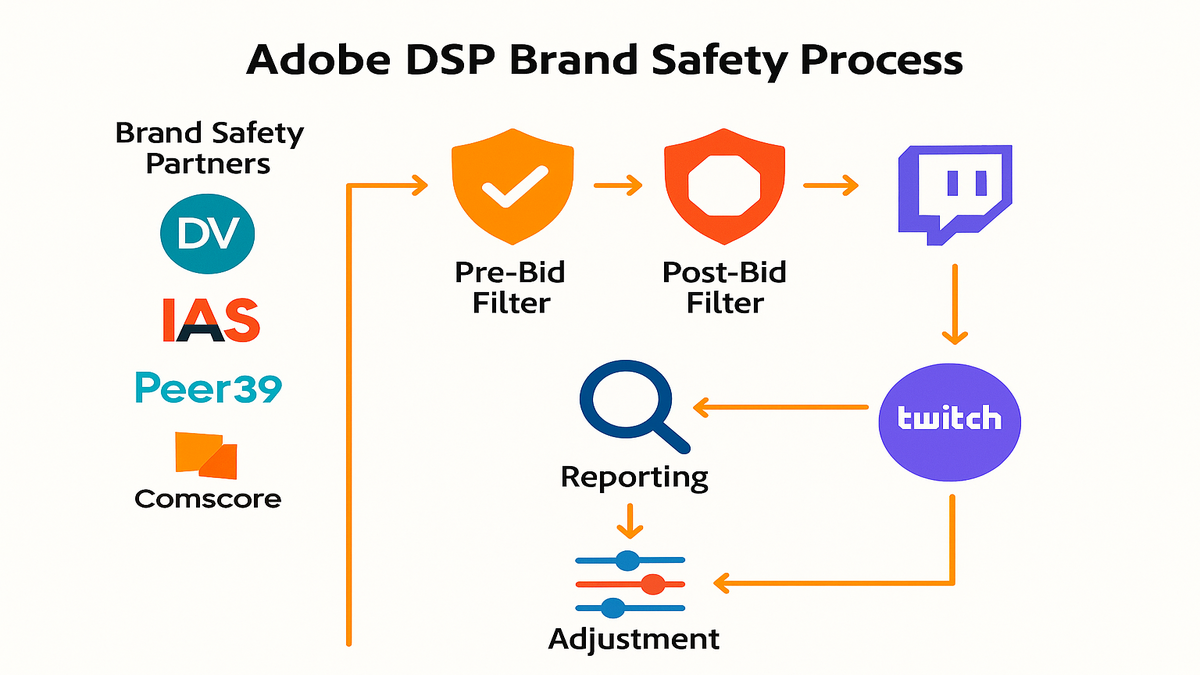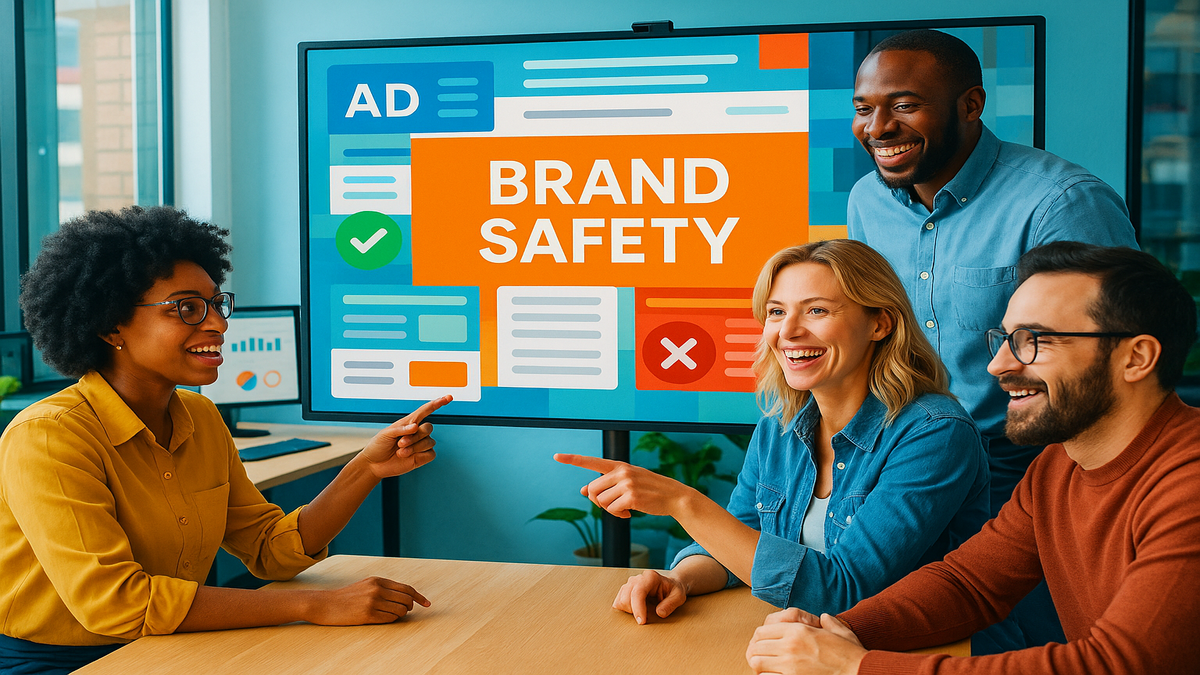
Master Adobe DSP Brand Safety To Protect Your Reputation

You spent months working on a sweet new ad campaign. It’s finally live. You’re waiting for high-fives and maybe a little Slack celebration. Instead? Boom. Your heart drops. Suddenly, there’s your ad, smack next to a viral video pushing weird conspiracy theories. Or even worse, sitting on some shady, spammy site loaded with bots. In a snap, your proud campaign turns into a huge headache for your brand. You think, “Weren’t there supposed to be systems to stop this?”
Yeah, there are. Every major ad platform promises some kind of safety rails. But, let’s be real—“guardrails” can mean anything. Sometimes, they’re more like flimsy cones at a go-kart track. Not that helpful when things go south fast.
Brand safety used to mean avoiding the worst corners of the internet. Now, things are getting trickier. Top brands are going for something new: brand suitability. This is a step up from “just don’t get burned.” Now it’s about getting your ads in the perfect spots that actually fit your brand’s vibe and voice. It’s not just about blocking messes, but finding places that make your brand look GOOD—not just safe.
Now, check out Adobe Advertising DSP. They just launched an open beta combining really strong brand safety with fresh, easy-to-use suitability controls. It’s about giving you—not them—control. You decide what shows up, where it shows, and exactly how. No more just throwing ads everywhere and praying.
But, let’s be honest. Buzzwords do nothing for your stress levels at 2am. So, how does Adobe’s suitability system actually work? Can it stop your logo from ending up all over some trashy website? And does it stack up against giants like Amazon or Facebook? Want to really control your brand image, not just clean up after disasters? Let’s dive in.
Pretty soon, brands won’t just avoid messes—they’ll set the stage and steal the show. Welcome to Suitability 2.0.
Key Takeaways:
- Adobe DSP’s open beta brings advanced controls and partners like DoubleVerify, IAS, Comscore, Peer39.
- You get protection before and after the ad runs (pre-bid and post-bid)—so every impression is covered.
- Suitability beats safety. It’s about matching ads to your brand’s style and story.
- Automation saves time, but you still get to see everything going on. No secrets.
- Set custom controls at every level: account, campaign, or individual ad groups.
- Right now, it works only on Twitch with Display and Video ads.

Why Brand Safety Isn’t Just About Blocking the Bad Stuff
From Fires to Fit: Evolving Brand Protection
Go back to 2017, and brand safety was about avoiding “what the heck is my ad doing here?” moments. Easy goal: keep your ad away from nasty videos and hateful blogs. Platforms blocked a few obvious words and called it a day.
But the internet moves quick. What feels safe this week could be all over the news next week. Viral stuff changes fast. Just being on defense isn’t enough now. Think of brand safety as your smoke alarm. Suitability is more like picking out furniture. It’s building an ad space that fits your brand’s look and feel. Like, if your brand is funny, do you want your ad next to the latest doomsday news? No way.
Clare O’Brien, Chief Policy Officer for Digital Trading, says: “The next step is fitting your ad with your brand—not just avoiding the worst.” What does that mean, day to day?
- Context matters: Imagine a fun soda ad at a summer music festival recap—huge win. But, put that same ad before a heated news clip? Awkward, maybe even a little harmful.
- Platform stuff: Amazon, Meta, and Adobe all do safety differently. Some hold your hand, others just toss you mittens and wish you luck.
- Trust from customers: Kantar’s 2023 study says 68% of people lose faith if they see a brand ad next to something sketchy or off-tone. One bad placement can make your brand go viral, but for the wrong reasons.
So here’s the real deal: it’s not just about surviving disasters. Top brands actually shape the story. They make sure they show up where they belong, with the right people and the right vibe.
Under the Hood: How Adobe DSP Builds Guardrails That Flex
Customization, Machine Learning, and Third-Party Power
Adobe’s DSP isn’t just a basic “no bad websites” filter. With the open beta, they added machine learning, personalization, and big-name partners. It mixes art with smart tech, plus a pinch of “better safe than sorry.”
You get protection beyond the same old blocks (hate, violence, NSFW). Here’s who helps:
- DoubleVerify: The big shot in context and brand safety.
- IAS and Comscore: Dig deep, even down to single web pages, to check things out.
- Peer39: Uses AI to block not just bad keywords, but even bad moods or sudden events.
Matt Green, Senior Director at the World Federation of Advertisers, says: “If a DSP doesn’t offer outside verification, don’t bother.”
Pre-Bid vs. Post-Bid: Double-Down Defense
Most ad systems use “pre-bid” filters—only bid if things look okay. Handy, but not enough. Adobe adds another step—"post-bid"—so if an ad does slip through, the system can pull it out before it causes trouble. Not just “set and leave”—more like “set, watch, and get even tighter if needed.”
You can pick how strict you want to be:
- Advertiser Level: Set a brand-wide standard.
- Campaign Level: Change things up for different campaigns.
- Ad Group Level: Go detailed for special targeting.
With this, big brands keep global rules, while startups can jump on trends, news, or memes as they happen.
Display & Video Ads on Twitch
For now, all this is for Twitch ads—great if you want to reach gamers. Only Display and Video ads right now. It feels like Twitch is Adobe’s testing ground, but this will probably roll out wider real soon.
Unlocking Brand Suitability: DoubleVerify ABS Explained
How ABS Segment IDs Supercharge Protection
Now for something techy but powerful: DoubleVerify Authentic Brand Safety (ABS) targeting. Sounds a little confusing, but it’s simple:
- You (or your agency) get a special “segment ID” from DoubleVerify. It starts with “51” and has eight numbers.
- This ID spells out your brand’s limits—topics, words, themes to avoid, everything.
- You upload the segment ID to Adobe DSP. Now, the system enforces those exact safety limits before the ad even runs.
- You can set segment IDs at the account, campaign, or individual ad level. A brand-wide base rule? Set it at the top. Special Halloween campaign, want to skip horror? Change it just for that campaign.
Forget to upload an ID? Adobe’s own guardrails still kick in. But it’s smarter to use your own—like locking both your doors at night.
“With DoubleVerify, we actually control things again. I can sleep better, knowing my ad brand rules are baked into the system.” —Emily Newman, Programmatic Director, Havas Media
Internal Billing, Real Transparency
Paying for these services happens right inside Adobe’s DSP—no weird invoices or confusing dashboards. All controls show up in the main workflow. If you’re over other tools and messy reports, this is a nice fix. Compare to Meta (Facebook): they let you toggle a lot, but mostly blocklists only. Adobe’s system, using segment IDs, is more specific for each ad.
Is ABS a Silver Bullet?
Almost. But only if you actually set and update your brand’s “safe zones.” If you let those rules get old, you’ll miss out on new risks (hello, fresh memes and dumb viral trends). The golden rule: don’t do “set and forget.” Check and adjust your settings often, since stuff changes fast online.

Granular Controls: From Ad Groups to the Big Picture
Custom Contextual Filtering
Here’s where techies and creative folks high-five. Contextual filtering lets you pick not just what to block, but also where you WANT your brand to shine. If you hate politics, block it. Want to jump on a new trend? Update your settings instantly. Here are the details:
- Provider Libraries: Lots of preset topics to exclude (like tragedy, gambling, politics).
- Custom Blocklists: Add new bad sites, words, or categories live. No need to wait for updates.
- API Power: For huge teams, APIs let you change settings for hundreds of ads in one go. No digging through dashboards forever.
"Adobe’s API means we can react fast, protect brands in the moment—no long waiting when chaos hits." —Digital Performance Lead, Dentsu
Placement, Publisher, and Reporting Layers
Super-detailed controls mean you can:
- Set rules for placements, ad groups, or campaigns. If one influencer goes nuts? Target that channel only.
- Check publisher-level reports—see where your ads really appear. Track the bad ones, reward the good ones.
- Move budgets quickly. If a site gets risky, you can shift your spend on the fly. Real-time defense, not just after problems.
This reporting finally closes the loop between buying ads and protecting your brand. No more guessing.
Automation Meets Oversight—The "Glass Box" Approach
Algorithmic Weighting Without Losing the Human Touch
Adobe’s beta uses automation to help you, not replace you. Here’s the "glass box" deal (not a hidden "black box"):
- Algorithmic Suggestions: The system spots sketchy trends before most people and suggests tweaks.
- Total Transparency: Every suggestion, every change—you can see it all. Don’t like it? You can override any time.
- Ongoing Smartness: Over time, it learns your preferences. If a site is converting well but getting risky, you can spend less there, not block completely. Less manual work, less missed chances.
“You mess up when you hand everything to the algorithm. With Adobe, you still steer the ship.” —Shaan Puri, creator & investor
Elevating Alignment
This is more than running away from trouble. It’s about finding the RIGHT crowd for your brand. Amazon, Meta, and others all block and measure, but Adobe’s guiding clients on where to appear—not just where to hide. Don’t sleep on this: the right place makes your brand stronger than hiding in the safe zone.
Suitability At-A-Glance
Here’s Your Quick Recap:
- Brand suitability = your ads belong in the right places, not just the safe ones.
- Adobe DSP’s beta gives you pre-bid blocking, DoubleVerify ABS, and tailored controls at every level.
- Automated hints and deep reporting let you see trouble ahead and act, not just clean up later.
- It works for everyone—from global brands to speedy new startups.
FAQs
1. How is Adobe DSP’s brand suitability different from basic safety?
Suitability is more than skipping bad spots. It means your ads only show up where they belong, matching your style and tone. Safety’s the floor; suitability is the rooftop.
2. What is a DoubleVerify ABS segment ID, and how does it work?
It’s an eight-digit code (starting with 51) made for your brand. You upload this to Adobe DSP, which then only puts your ads where that code says it’s safe—for your brand.
3. Can I change settings after a campaign starts?
Yep. Change safety rules anytime—real easy with the dashboard or the API. You can react to news, memes, or anything weird instantly.
4. Does automation replace human review?
No way. Automation speeds things up, but you always control the calls. Everything done is visible and open to changes.
5. How does Adobe DSP stack up to Amazon or Meta?
All three use the same brand safety partners, but Adobe’s system gives deeper, more open controls and works well for folks who want to move fast and see everything.
6. Where can I use the open beta, and which ad types?
For now, it’s Twitch only, and just for Display and Video ads. That should change soon.
Supercharge Your Brand Suitability: What To Do Next
Don’t mess these steps up:
- Review your brand’s risks—what’s a total no-go for you? (Don’t just copy other brands—make your own list!)
- Add partners like DoubleVerify or IAS—if not, you’re flying blind.
- Use ABS segment IDs for placements. API’s best if you’re big, manual works if you’re small.
- Check publisher reports every week. The internet shifts, and so do the risks.
- Keep blocklists and rules fresh—online culture flips every hour.
- Use the system’s tips, but steer every move yourself.
Stay sharp: Ads that fit your brand are digital gold. The big win? Not just “not screwing up,” but building a real home-court online. Somewhere people actually want to see your ad.
Adobe DSP’s beta makes this easier, faster, and clearer. In a world where one bad ad can go everywhere, this isn’t just shiny new stuff—it’s a survival kit. Safe is cool. Safe AND on-brand? That’s how you win.
If you want to ramp up cross-channel smarts or want hands-on help, check out DSP Services.
Need big-time analytics and instant reporting? AMC Cloud helps keep your campaigns fresh and safe, with real results.

